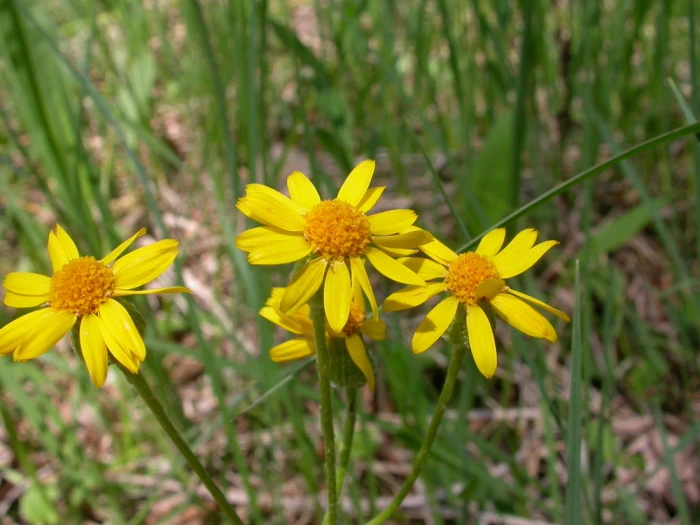Prairie Ragwort
(Packera plattensis)
Prairie Ragwort (Packera plattensis)
/
/

Pieter Pelser
CC BY 3.0
Image By:
Pieter Pelser
Recorded By:
Copyright:
CC BY 3.0
Copyright Notice:
Photo by: Pieter Pelser | License Type: CC BY 3.0 | License URL: https://creativecommons.org/licenses/by/3.0 | Uploader: CarolSpears | Publisher: Wikimedia Commons | Title: Packera_plattensis_1.jpg | Notes: User created page with UploadWizard |




















































Estimated Native Range
Climate Requirements for Huntington Park, California
| This Plant | Your Site | Plant Suitability for Your Location | ||
|---|---|---|---|---|
| • Precipitation | 11" - 145" | 15" | Your precipitation may be insufficient for this plant. Irrigate N" / year. | Irrigate N" / year |
| • High Temp. | 61°F - 98°F | 87°F | Your summer temperatures are normal for this plant. | Excellent |
| • Low Temp. | -23°F - 41°F | 46°F | OK, but your winter temperatures are warmer than normal for this plant | OK |
This plant should grow well at your location with about N inches per year (Y minutes per month) of irrigation.
Summary
Packera plattensis, commonly known as Prairie Ragwort or Prairie Groundsel, is a perennial herb native to North American tallgrass prairies, particularly in the Great Plains region. It is adapted to open areas with full sunlight and is often found in prairie remnants, meadows, and along roadsides. This species typically grows to a height of 1 to 2 feet (30-60 cm) and spreads to about the same width. Prairie Ragwort has a clumping form with lance-shaped leaves and bears bright yellow, daisy-like flowers with a prominent central disk. The flowering season extends from April to July, and the blooms are quite showy, attracting pollinators such as bees and butterflies.
Prairie Ragwort is valued for its early bloom time and vibrant flowers, which can add color to native plant gardens, wildflower meadows, and restoration projects. It is a low-maintenance plant that is drought-tolerant once established, making it suitable for xeriscaping. In cultivation, it thrives in full sun and prefers well-drained soils but can tolerate a range of soil types. While it does not have aggressive roots, it can self-seed and spread in favorable conditions, which should be monitored to prevent unwanted naturalization.CC BY-SA 4.0
Prairie Ragwort is valued for its early bloom time and vibrant flowers, which can add color to native plant gardens, wildflower meadows, and restoration projects. It is a low-maintenance plant that is drought-tolerant once established, making it suitable for xeriscaping. In cultivation, it thrives in full sun and prefers well-drained soils but can tolerate a range of soil types. While it does not have aggressive roots, it can self-seed and spread in favorable conditions, which should be monitored to prevent unwanted naturalization.CC BY-SA 4.0
Plant Description
- Plant Type: Herb
- Height: 1-1.4 feet
- Width: 0.357-0.5 feet
- Growth Rate: Moderate
- Flower Color: Yellow
- Flowering Season: Spring, Summer
- Leaf Retention: Deciduous
Growth Requirements
- Sun: Full Sun
- Water: Low, Medium
- Drainage: Medium
Common Uses
Bee Garden, Bird Garden, Butterfly Garden, Drought Tolerant, Groundcover, Low Maintenance, Showy Flowers
Natural Habitat
North American tallgrass prairies, particularly in the Great Plains region, including prairie remnants, meadows, and roadsides
Other Names
Common Names: Prairie Ragwort
Scientific Names: Packera plattensis, Senecio plattensis
GBIF Accepted Name: Packera plattensis (Nutt.) W.A.Weber & Á.Löve